77 F. high in the Twin Cities Wednesday.
65 F. average high on October 2.
72 F. high on October 2, 2012.
.01" rain as of 7 PM at MSP International.
.92" additional rain predicted by Saturday evening (NAM model).
Preparing Minnesota for Climate Change: a Conference on Climate Adaptation.
This important, all-day session will be held at The Science Museum on
November 7. Tickets are available for businesses and consumers; details
below.
Chilly Marathon.
Expect 40s Sunday morning for the Medtronic Twin Cities Marathon, a
stiff breeze at 10-15 mph with higher gusts. Odds favor partly to mostly
cloudy skies and dry weather most of Sunday morning, but a few
instability showers/sprinkles may drift into the metro area Sunday
afternoon.
Puddle Potential
Umbrella. Noun. "
A
device consisting of a circular canopy of cloth on a folding metal
frame supported by a central rod, used as protection against rain."
I
had to brush cobwebs off my umbrella, and for good reason. The last day
with an inch or more of rain was back on August 6. Since then it's been
"flash drought" and fickle, sporadic (piddly) rainfall amounts. It's
time for a real storm, a jolt of steady rain to replenish dry topsoil
and low lake water levels.
The biggest storm in 5 months will
track north, pushing waves of rain, even a few embedded T-storms, across
the state. Mercifully, the atmosphere will be warm enough for rain. The
Dakotas may see a few inches of slushy snow. A tough break for Pierre,
where the high was 88F on Monday.
Saturday looks like a good
museum/movie day, and any peeks of sun early Sunday will quickly give
way to low, lumpy clouds and a chilling breeze. Expect 40s and
mostly-dry weather for Sunday's Twin Cities Marathon, but instability
showers may pop up by afternoon.
Yes, the timing could be better,
but we need the rain. I still don't see a metro frost looking out 8
days, in fact 60s return next week. Hardly a warm front but welcome
nonetheless.
One Welcome Soaking.
4km. NAM model data suggests some 2-4" rainfall amounts over southern
Minnesota by Saturday, 1-2" over central Minnesota. This is the
long-duration rainfall event we need to ease the drought. Map: Ham
Weather.
Censored For Your Mental Health.
This is all happening too fast; a sudden rush of winter. You have to
feel for residents of Pierre, South Dakota, where the high was 88F on
Monday. A inch or two of slush is possible over central South Dakota,
plowable amounts of snow over the Black Hills and Wyoming. Snowfall
prediction: NOAA and
Ham Weather.
A Classic Autumnal Storm.
Unlike fickle summertime convection, T-storms 5 miles in diameter,
autumn and winter storms tend to smear hundreds of thousands of square
miles with steady, widespread rain or snow. One such storm is upon us,
and lingers into Sunday. ECMWF data suggests temperatures may not climb
out of the 50s in the metro from Friday into Sunday, but 60s return next
week. Graphic: Weatherspark.
Looks Like Rain.
The 4km NAM did a good job showing last night's heavy T-storms. As a
deepening area of low pressure pushes north across the Plains waves of
rain will drift across the state, heavy at times, mixing with snow over
the western Dakotas. Animation: Ham Weather.
Tracking A Real Storm - And A Risk of "Karen"?
GFS model guidance shows an intense storm pushing from Wichita and
Omaha to the Twin Cities by Saturday, whipping up 30-40 mph winds across
the Dakotas, where rain will change to wet snow by Friday and Saturday.
Watch the disturbance pushing north across the Gulf of Mexico - there's
a growing chance it will become Tropical Storm Karen, with possible
Saturday impact between New Orleans and Pensacola. Loop: Ham Weather.
Raw Saturday Blues.
I'm going to check out "Gravity" and "Rush" at the local theaters on
Saturday. It'll be much too wet to take in the dock, or move the lawn
chairs, or clean out the gutters. College football, rearranging your
sock drawer - come up with an alternative, a Plan B. Showery rains
linger Saturday, 4pm temperatures above courtesy of the NAM model and
Ham Weather.
Slushy Weekend Roads Across The Dakotas?
The map above shows 1 am temperatures early Sunday morning, the 32F
isotherm uncomfortably close to Minnesota. Payback for all those mild,
glorious days in September? Probably.
Extended Outlook: Jacket Weather.
We warm up into the 60s next week, but the 3rd week of October will see
another swing to colder weather, a streak of days with highs in the
50s. Much of the metro may remain frost-free into next week, but NOAA
GFS data shows a much better chance of a frost/freeze after October 17.
Government Shutdown Affects Weather, Climate Programs.
Impacts are showing up (not directly related to severe weather
prediction or tracking), but some data sources are down - I know that
from personal experience. Here's an excerpt from
Climate Matters: "...
According
to a spokesperson for the Commerce Department, which houses NOAA, the
missions of “weather, water, and climate observing, prediction,
forecast, warning, and support” will all continue despite a lapse in
fiscal year 2014 appropriations. However, much of NOAA’s research
activities have stopped or been slowed. For example, Harold Brooks, a
top tornado researcher who works at the National Severe Storms Laboratory in Norman, Okla., reported his furlough notice on Facebook on Tuesday. Much of the staff at NOAA's Earth Systems Research Lab and the Geophysical Fluid Dynamics Laboratory,
except for positions related to maintaining computing resources, have
also been furloughed. Those two labs are heavily involved in NOAA's
climate research programs..."
 October Tornado Reminder
October Tornado Reminder. Although rare, tornadoes in Minnesota and Wisconsin have been observed as late as mid-November.
Critical Fire Risk Southern California.
Powerful Santa Ana winds are forecast to howl through the canyons of
southern California later this week, reaching speeds as high as 60 mph.
Throw in tinder-dry humidity levels and bright sun and you have all the
ingredients for erratic, fast-moving wildfires near L.A. and San Diego.
Florida Faces Ruinous Flood Rate Hikes. Here's a clip from the
Bradenton Herald: "...
Under
the law, 13 percent of the 2 million homeowners who carry flood
insurance in Florida will be affected by the rate increase — compared to
20 percent of all policyholders nationwide. Those homeowners will see
their rates rise 25 percent upon renewal until they decide to sell their
homes, and then the new buyer will have to pay the full cost of that
insurance — in some cases as much as 3,000 percent more than current
rates — to reflect the true flood risk of their property. The result is
having a chilling effect on real estate sales as buyers balk at closing
on purchases of older homes that now carry the subsidized rates, said
John Sebree, senior vice president of the Florida Realtors Association..."
The Hard Math Of Flood Insurance In A Warming World.
Time Magazine
has a comprehensive story on spiking insurance rates and the escalating
cost of having a home or business on or near America's coastline. Maybe
perpetutal climate skeptics will come around when it hits them in the
wallet - when they witness the impact of more extremes on their
insurance premiums. It's already happening, because insurance companies
don't care about ideology or spin - they respond to the actual numbers.
Here's the intro: "
Thousands of homeowners in flood-prone parts of
the country are going to be in for a rude awakening. On Oct. 1, new
changes to the National Flood Insurance Program (NFIP), which offers
government-subsidized policies for households and businesses threatened
by floods, mean that businesses in flood zones and homes that have been
severely or repeatedly flooded will start going up 25% a year until
rates reach levels that would reflect the actual risk from flooding.
(Higher rates for second or vacation homes went into effect at the start
of 2013.) That means that property owners in flood-prone areas who
might have once been paying around $500 a year—rates that were well
below what the market would charge, given the threat from flooding—will
go up by thousands of dollars over the next decade..."
File Photo: 2012 Duluth flood aftermath courtesy of Glen Stubbe, Star Tribune.
Florida To Sue Georgia In U.S. Supreme Court Over Water.
Too much water in some areas, much too little water in others, and once
aquifers run out of water or drought triggers greatly reduced water
flow in area rivers the situation becomes unmanageable. Here's a clip
from a story at
Bloomberg: "
Florida
plans to file a U.S. Supreme Court lawsuit against Georgia, saying the
state is consuming too much water that would otherwise flow to Florida,
the latest battle nationally over an increasingly scarce resource. The
dispute is fueled by the rapid growth of the metropolitan area
surrounding Atlanta, which is demanding more water and hurting the
oyster industry in Northwest Florida, Florida Governor Rick Scott, 60,
said yesterday. Scott, a Republican, said he would file suit next month
after the two states couldn’t reach an agreement. “That’s our water,”
Scott told reporters while standing next to the Apalachicola Bay in the
Florida Panhandle. “They’ve impacted our families. They’ve impacted the
livelihood of people down here...”
Photo credit: Thinkstock.
Florida Man Takes Boat Right Into A Waterspout.
In case you missed this video clip that went viral. I guess this makes
some sense: storm chasers track tornadoes on land, adventurous boaters
seek out waterspouts up close and personal. Here's a link to the video
and article at
The Orlando Sentinel: "
A
Florida man saw a spinning funnel cloud and did what you would
expect...from a Florida man. He turned his boat and drove it right
through it. Kevin Johnsen, of Marathon, who is a charter boat captain at
Florida Keys Fish Adventures captured video of five waterspouts off the
Florida coast last week and recorded a video of he and another man,
Aaron Osters, taking their boat and piloting it right through one of the
waterspouts..."
Photo credit above: "Kevin
Johnsen took this photo on Sept. 25, 2013 off the Florida coast. He
writes, "This is one of the better shots, but the wide angle camera
can't pick up the details of how striking the scenery was." (Courtesy of Kevin Johnsen, Florida Keys Reel Adventures / October 1, 2013).
Celestial Magic.
I wish there was an effective, reliable way to predict aurora in
advance. There isn't, at least not yet. Tuesday night's episode of The
Northern Lights was visible as far south as Nebraska, shimmering
curtains of red and green, the result of a major solar flare sending out
a stream of charged particles that interacted with Earth's magnetic
field. Thanks to
Neva Andersen who snapped this amazing photo in northern Minnesota. Photo courtesy of KARE-11 and WeatherNation TV.
One Wild Sight.
Thanks to Natale Weidner in Albertville, MN for sending in a photo of
rare asperatus, a cloud type that was only recently classified by
meteorologists.
The Garage Where Google Was Born.
Both Google and Apple were (literally) started in Silicon Valley
garages. Humble origins for what would transform into world-changing,
multi-billion-dollar worldwide enterprises. Here's an excerpt of a great
read at
Mashable: "
It all started in a garage that you can still find with minimal effort — especially if you're using Google Maps.
Less than one mile off U.S. Route 101, the highway that links San
Francisco to the rest of Silicon Valley, you'll come to a quiet
neighborhood a stone's throw from Stanford's beautifully manicured
campus. It was in Menlo Park, in a single-story home on Santa Margarita
Avenue, that Google
co-founders Larry Page and Sergey Brin rented the garage from Susan
Wojcicki, now a Google senior VP, who was fresh out of business school
and afraid of missing her mortgage payments..."
TODAY: Rain likely, clap of thunder? Winds: E 10. High: 68
THURSDAY NIGHT: Periods of rain and drizzle, very damp. Low: 55
FRIDAY: More rain, heaviest late PM hours. High: 65
SATURDAY: Windy & raw, lingering showers. Wake-up: 50. High: 53
SUNDAY: Mostly cloudy, PM sprinkles. Wake-up: 44. High: 52
MONDAY: Partly sunny and pleasant. Wake-up: 42. High: 61
TUESDAY: Fading sun, not bad. Wake-up: 40. High: 64
WEDNESDAY: Intervals of sun, still mild. Wake-up: 49. High: 68
Read more here: http://www.bradenton.com/2013/09/30/4748702/florida-faces-ruinous-flood-rate.html#storylink=cpy
Climate Stories...
Preparing Minnesota for Climate Change: A Conference on Climate Adaptation.
This daylong event is being held Thursday, November 7, 2013 9 am - 5:30
pm, followed by a reception at The Science Museum of Minnesota in St.
Paul. This is the first annual gathering of local and state experts
covering a diverse range of topics related to climate mitigation and
adaptation in Minnesota, and some tickets are still available. I'll be
there; if you're personally interested in this topic, or have an
interest in possible impacts on your business or public sector duties in
the years ahead you should plan on attending. Here's a good overview
from the organizer of the event, Dr. Mark Seeley: "
The first ever
statewide conference on climate change adaptation practices will take
place at the Science Museum in downtown St Paul on November 7, 2013 from
9:00 am to 5:30 pm. The cost for the conference is modest at $60 and
includes lunch, breaks, parking, and a free pass to the Science Museum.
This conference which is titled “Preparing Minnesota for Climate Change:
A Conference on Climate Adaptation” has been designed by those who have
been measuring and documenting the changing climate attributes in the
state and their associated consequences. Professionals who have worked
in transportation, agriculture, energy, health care, city planning,
watershed and forest management, and the insurance industry will share
their stories and experiences relative to adapting to our changing
climate. The educational sessions will be followed by an evening
reception in the Science Museum cafeteria at 5:30 pm so that informal
socializing and networking among citizens and groups can occur." If interested in attending you can visit the web site for the conference at
www.wrc.umn.edu
Photo credit above: "
June 2012's torrential rains devastated landscapes and wiped out the Highway 210 approach to the Thomson Bridge in Jay Cooke State Park, ten miles southwest of Duluth." Photo credit: Minnesota Department of Transportation.
Climate Change: How Hot Will It Get In My Lifetime? The Guardian
has an interactive tool that lets you see how much warming the world
has experienced since you were born, along with possible outcomes based
on future GHG emissions: "
The UN is to publish the most exhaustive
examination of climate change science to date, predicting dangerous
temperature rises. How hot will it get in your lifetime? Find out with
our interactive guide, which shows projections based on the report."
Graphic credit above: "
Data
provided by the Environmental Change Institute, School of Geography and
the Environment, and Department of Physics, University of Oxford, with
support from the Oxford Martin Programme on Resource Stewardship and the
Union of Concerned Scientists. Modelling by Richard Millar. Interactive
by Duncan Clark."
Temperature
projections are based on the idealised climate model of Boucher and
Reddy (2009), as used for calculation of warming potentials in IPCC
(2013), driven by the IPCC "RCP8.5" high emissions scenario. They are
consistent with, but not identical to, to the projections of the IPCC
(2013).
Yosemite's Largest Ice Mass Is Melting Fast. I'm sure it's just an optical illusion.
The Los Angeles Times has the story; here's the intro: "
Climate change is taking a visible toll on Yosemite National Park,
where the largest ice mass in the park is in a death spiral, geologists
say. During an annual trek to the glacier deep in Yosemite's
backcountry last month, Greg Stock, the park's first full-time
geologist, found that Lyell Glacier had shrunk visibly since his visit
last year, continuing a trend that began more than a century ago. Lyell
has dropped 62% of its mass and lost 120 vertical feet of ice over the
last 100 years. "We give it 20 years or so of existence — then it'll
vanish, leaving behind rocky debris," Stock said..."
Photo credits above: "
The
photo on the left of Lyell Glacier in Yosemite National Park was taken
by the U.S. Geological Survey in 1883; the one on the right was taken by
park geologist Greg Stock in late September."
(U.S. Geological Survey; Greg Stock)
Climate Change Bringing More Severe Wildfires. Fire season out west is already 78 days longer, on average, than it was 40 years ago. Here's the intro to a story at
Risk Management Magazine: "
By
2050, wildfire season will be three weeks longer and result in fires
that are up to twice as smoky and spread considerably wider, based on
calculations by a team of environmental scientists at the Harvard School
of Engineering and Applied Sciences. While many groups have attempted
to project the impact of climate change on severe weather events like
storms and floods, the SEAS team took its research a step further to
examine secondary phenomena that are largely impacted by meteorological
factors, such as forest fires and air quality..."
Have The Media Failed Us On Climate Change? The short answer: yes. Here's a clip from
Mother Jones: "
With the release of the UN Intergovernmental Panel on Climate Change's Fifth Assessment Report in Stockholm on Friday, there were a wealth stories
for journalists to pursue. Scientists are now more certain than ever
that humans are causing global warming. Sea level rise projections have
been increased—extremely bad news for coastal mega-cities. And
researchers have given a stark warning about the irreversibility of
much of global warming, and how it will literally play out over a
millennium. But in recent weeks, we've seen a flood of media coverage
advancing dubious claims pushed by global warming skeptics, including:
* A large number of news article headlines framed around an alleged global warming "pause" that scientists have dismissed as statistically meaningless and insignificant.
* A British tabloid, The Mail on Sunday, portraying the sixth lowest Artic sea ice level on record as a "rebound" that undermines climate science—a claim that then reverberated in conservative media and even made its way to the halls of Congress..."
Image credit above: "
Fox News in October 2012." Screenshot: Media Matters/Fox News.
Climate Skeptics More Likely To Be Conspiracy Theorists And Free Market Advocates, Study Claims.
The Guardian has the story - here's a clip: "
Do
you think the Apollo moon landings might have been faked or that
Britain's Royal family maybe, just maybe, conspired to assassinate
Princess Diana because they didn't like her very much? How about that
other conspiracy theory, where there really is this secret New World
Order group with designs on global domination. Maybe you're up for that
other chestnut that has the US government knowing beforehand about the
September 11 attacks but letting them happen anyway so as to have a good
excuse to bomb Afghanistan? If you answered yes to any of these
conspiracy theories then a new study published today has found that you
probably also think the science of human-caused climate change is some sort of hoax and you might think too that there's no good evidence for vaccinating children..."
* more on the possible link between conspiracy theorists and climate denial from
Mother Jones.
Did The Arctic Ice Recover? Demographics Of True And False Climate Facts.
I guess this reinforces what we already know: political affiliation and
ideology often impact our personal data filters - we're more willing to
"accept" scientific findings if they align with our world-view. Here's a
summary of a new research abstract at the AMS,
The American Meteorological Society: "
Beliefs
about climate change divide the U.S. public along party lines more
distinctly than hot social issues. Research finds that better-educated
or informed respondents are more likely to align with their parties on
climate change. This information–elite polarization resembles a process
of biased assimilation first described in psychological experiments. In
nonexperimental settings, college graduates could be prone to biased
assimilation if they more effectively acquire information that supports
their beliefs. Recent national and statewide survey data show response
patterns consistent with biased assimilation (and biased guessing)
contributing to the correlation observed between climate beliefs and
knowledge..."
Fossil Fuel Interests Ready To Pump Millions Into Climate Change Debate.
The amount of money in play is staggering, many trillions of dollars
(of carbon-based "resources") still in the ground, and fossil fuel
companies want to be able to "harvest" these assets. Here's an excerpt
from an article at Forbes: "...Why
the “distrust” in its (IPCC) findings? Some genuinely dispute the
methodologies. Others, though, are influenced not by the research but by
the funds they are receiving. The burning of coal to make electricity,
for example, comprises at least a third of all man-made heat-trapping
emissions. But those interests have given millions to sitting members of
Congress, none of whom have any professional background in the field of
climate science. During the 2012 campaign season, Alpha Natural
Resources, Murray Energy, Console Energy, Arch Coal and Peabody Coal
donated hundreds of thousands to candidates. The coal industry as a
whole gave $8 million during that election cycle, says Sourcewatch.
Some of that cash was aimed at trying to defeat President Obama while
the preponderance was given to congressional Republicans who say that
climate change can’t be consigned to human activity..."

The World's Best Scientists Agree: On Our Current Path, Global Warming Is Irreversible - And Getting Worse. Here's an excerpt of a good summary of the latest IPCC climate report (AR5) from
Quartz:"...
Some other important takeaways from the new document:
• Between 1901–2012, “almost the entire globe has experienced surface warming… Each of the last three decades has been successively warmer at the Earth’s surface than any preceding decade since 1850.”
• ”The rate of sea level rise since
the mid-19th century has been larger than the mean rate during the
previous two millennia…. It is virtually certain that global mean sea
level rise will continue beyond 2100.”
• ”Atmospheric concentrations of CO2, methane, and N2O
have increased to levels unprecedented in at least the last 800,000
years….Most aspects of climate change will persist for many centuries
even if emissions of CO2 are stopped...”
Photo credit above: "
Brace for more of this." AP/Mike Groll.
Hit By Climate, Disaster Victims Call For Congressional Action. Here's an excerpt of an Op-Ed at
Live Science: "...
Their stories were powerful and diverse, telling tales of crop-crippling drought
in farms across the midwest, ravaging fires in the Sierra Nevada
mountains in the west, and record-setting hurricanes and flooding along
the east coast and the Gulf of Mexico. But all shared a common message:
climate change is real and fueling more dangerous extreme weather events. They implored Congress to take action to cut carbon pollution
and promote policies that will protect future generations from even
greater climate threats predicted by scientists. Rep. Henry Waxman
(D-CA), chairman of the Safe Climate Caucus, said these were voices that
more Americans need to hear. "Your experiences are proof that climate
change does have consequences," Rep. Waxman told the witnesses.
"Congress needs to hear from you and have you explain how a rapidly
changing climate can exact a tremendous toll on communities across the
country..."
IPCC Digested: Just Leave The Fossil Fuels Underground.
New Scientist has the article - here's an excerpt: "
Merely
reducing emissions is not enough. It will slow climate change, but in
the end how much the planet warms depends on the overall amount of CO2
we pump out. To have any chance of limiting the global temperature rise
to 2 °C, we have to limit future emissions to about 500 gigatonnes of
CO2. Burning known fossil fuel reserves would release nearly 3000
gigatonnes, and energy companies are currently spending $600 billion
trying to find more. The implications of the numbers are staggering. The
value of these companies depends on their reserves. If at some point in
the future the world gets serious about tackling climate change, these
reserves will become worthless. About $4 trillion worth of shares would
be wiped out, according to the non-profit Carbon Tracker Initiative. For most of us, that's our pension funds at risk..."
Technology Is Moving Too Slowly For Climate-Change Target.
Will technology save us? Or some combination of innovative energy
breakthroughs and behavioral changes (we can all live with, accept and
even embrace?) I don't pretend to know. Here's a clip of a rather gloomy
assessment at M.I.T. Technology Review and
Salon: "
The
IPCC says we can emit a trillion tons of carbon and still avoid major
warming. We’ll emit much more. One of the key findings of the
Intergovernmental Panel on Climate Change (IPCC) report released last
week was that we need to emit no more than one trillion tons of carbon
in order to stand a good chance of limiting global warming to 2 °C. The
problem is this: technology is not progressing fast enough to make this
happen. The trillion-ton figure is really an estimate, as no one knows
precisely how many tons of carbon will raise the temperature of the
planet by 2 °C. And less warming than that could cause significant
damage, while humans will probably survive higher levels. That said, the
number provides one of the clearest ways of thinking about what most
climate scientists believe needs to be done to avert serious climate
change..."
Photo credit above: "
In
this May 22, 2012 photo, a road crosses through an agricultural area of
a forest in San Francisco de Macoris, Dominican Republic." (Credit: AP/Ricardo Arduengo).

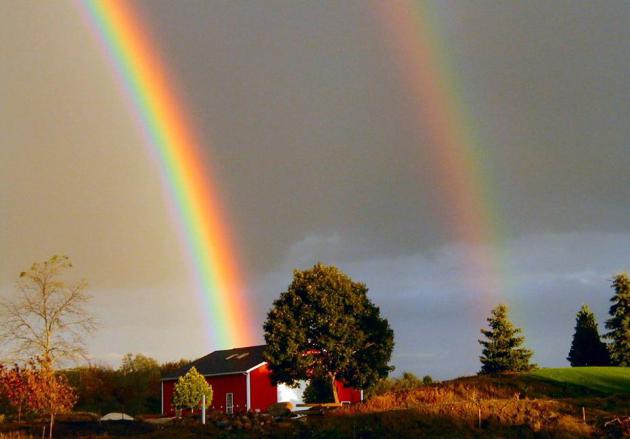
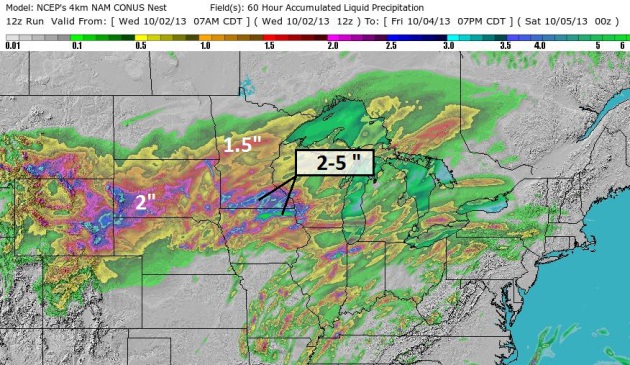
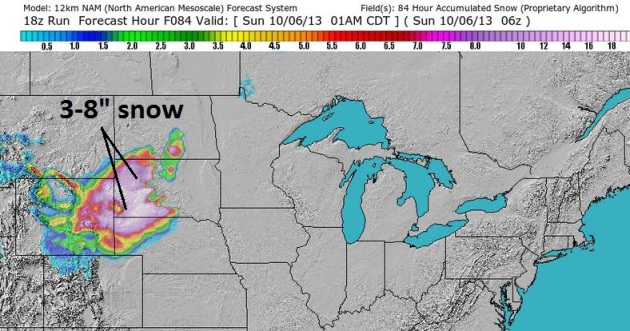
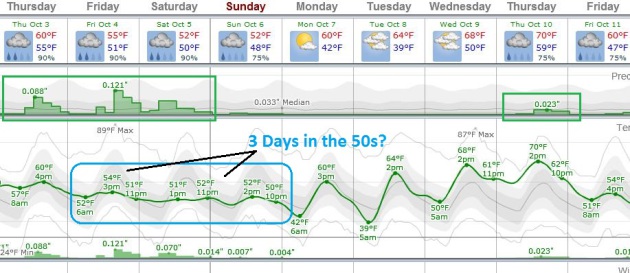
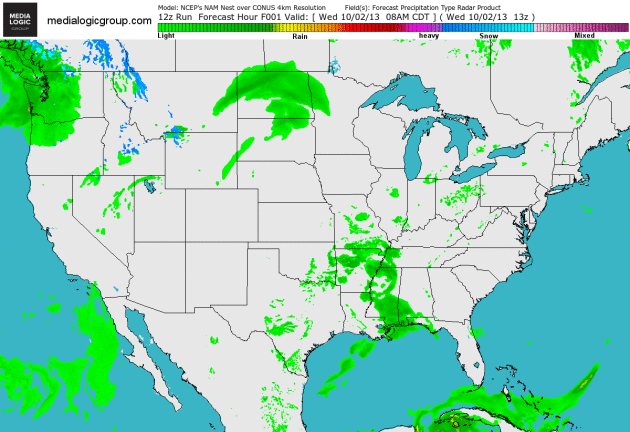
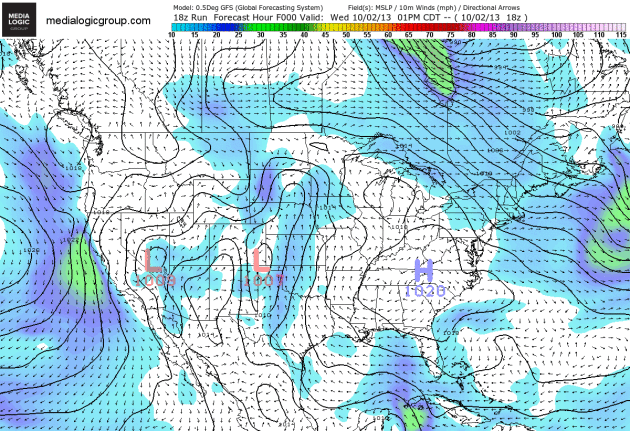
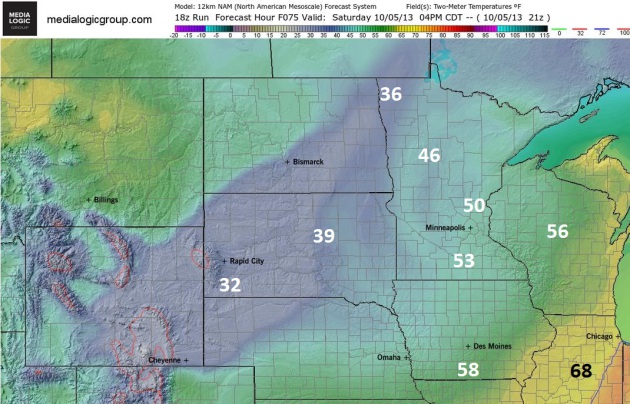
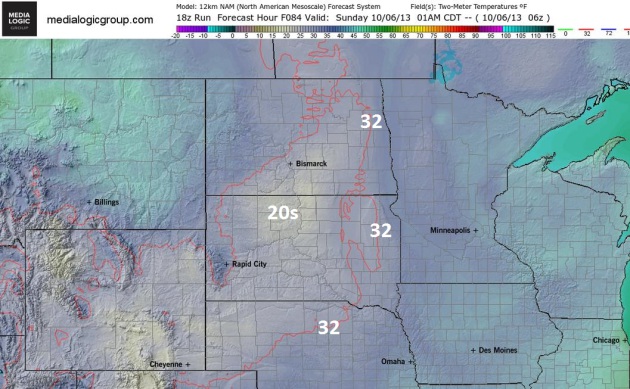

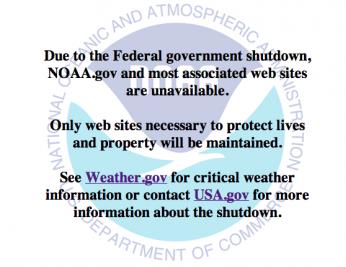

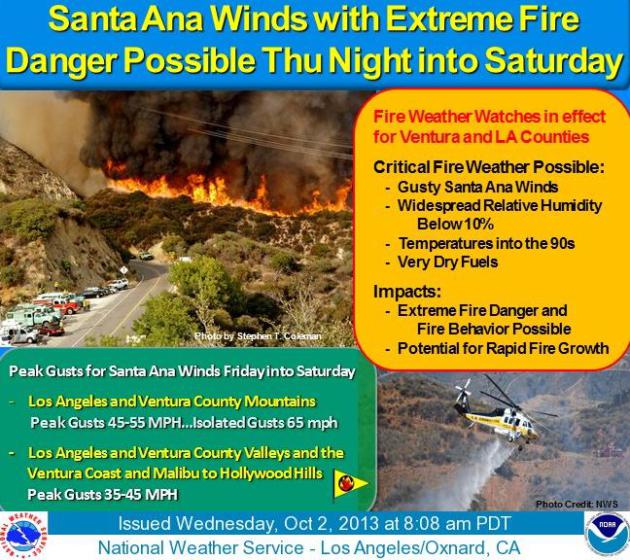
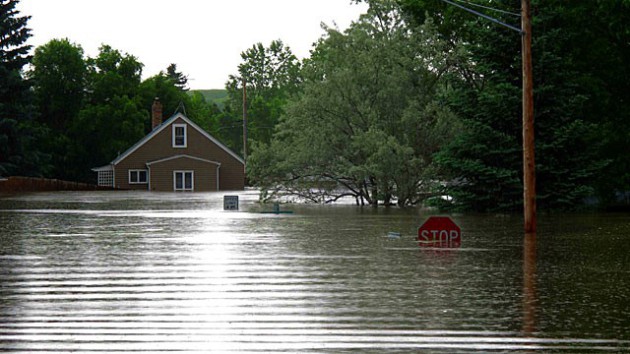
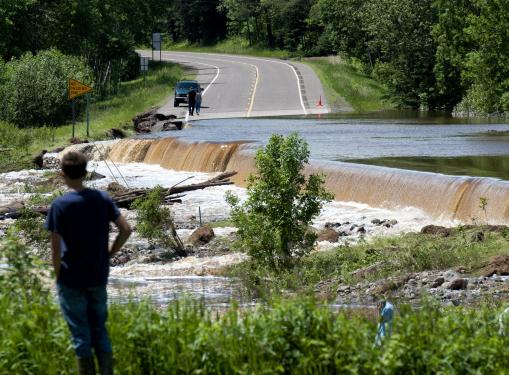
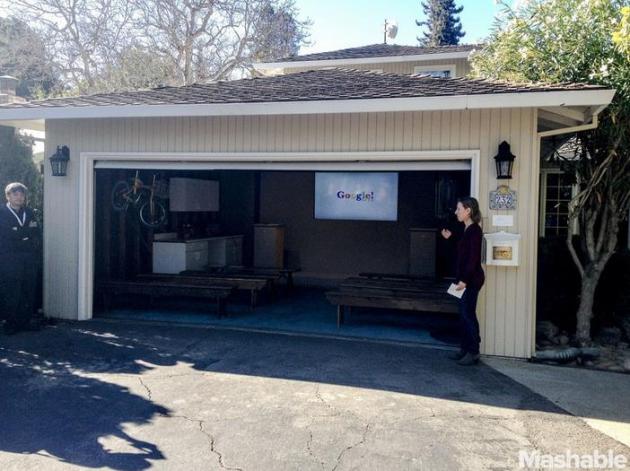
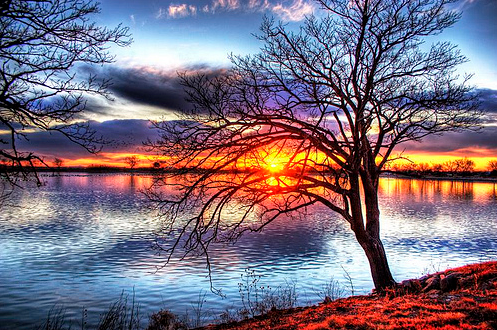
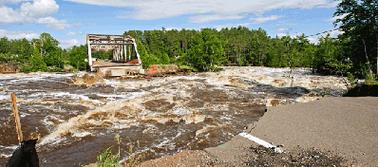
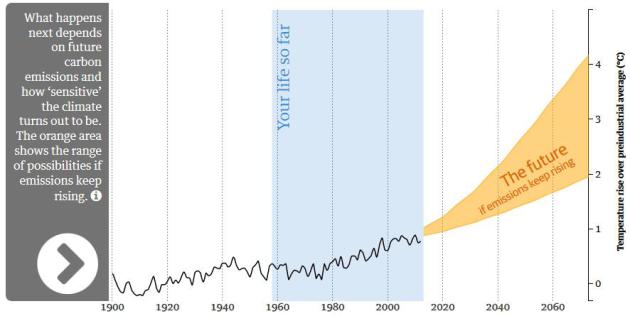
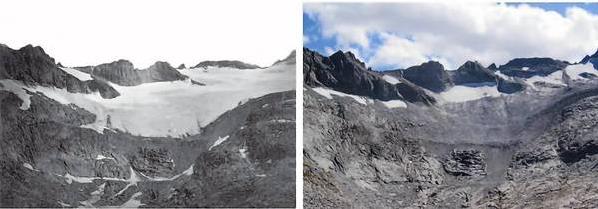
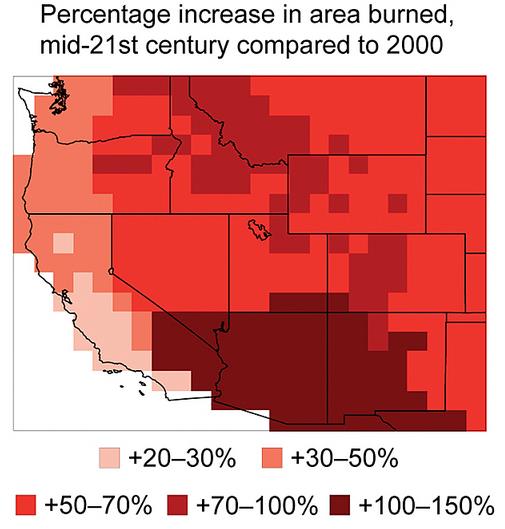
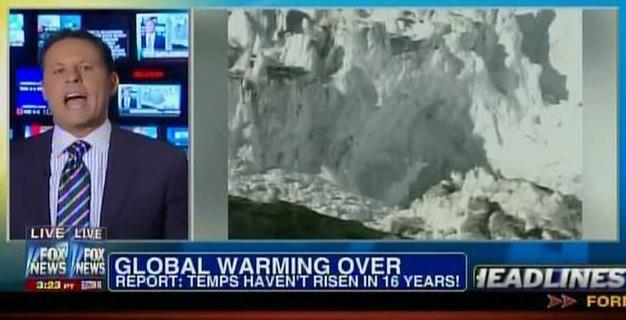
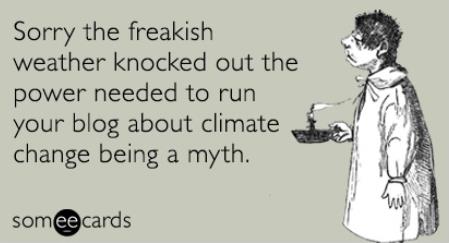

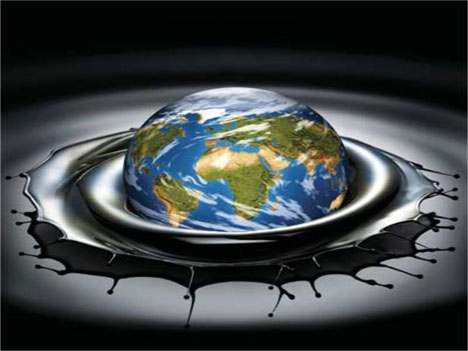
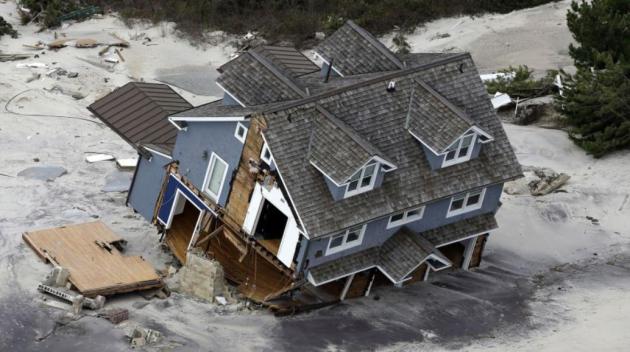
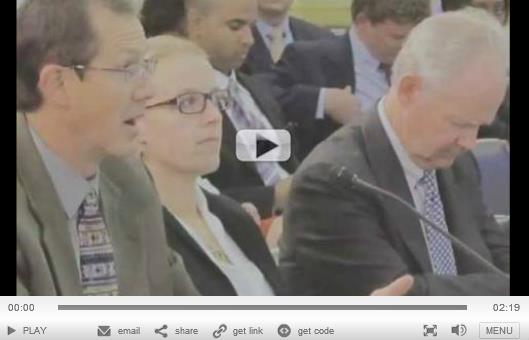
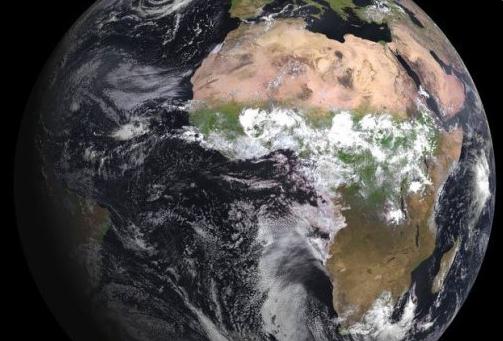
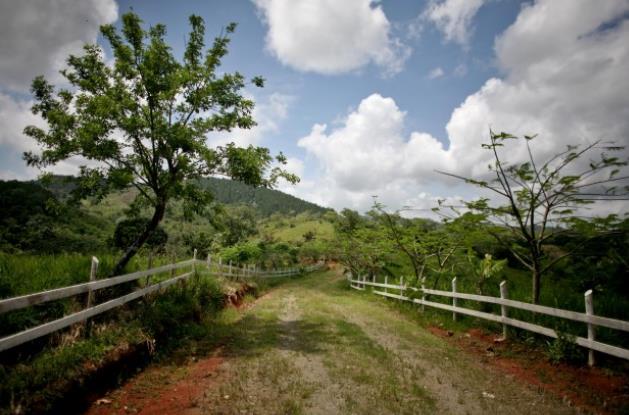
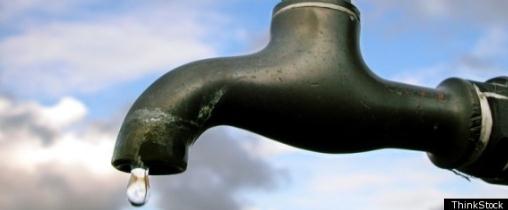
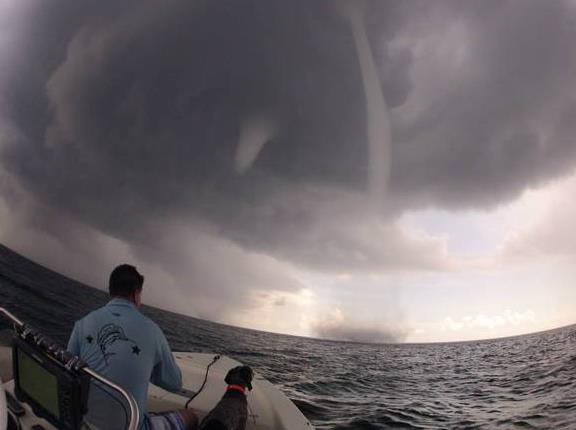
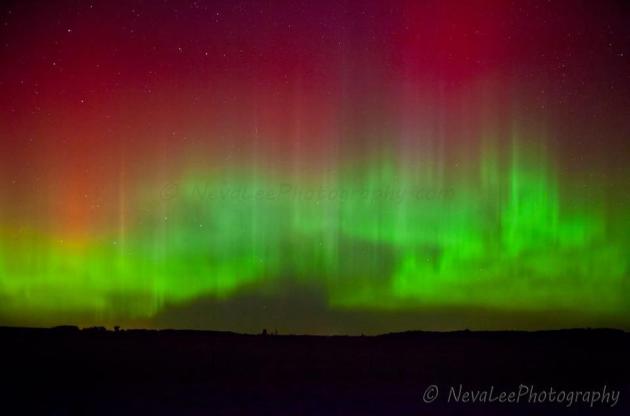
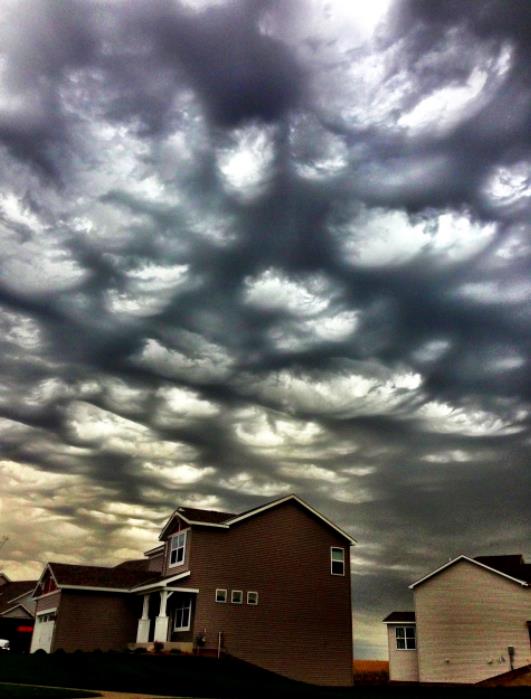
No comments:
Post a Comment